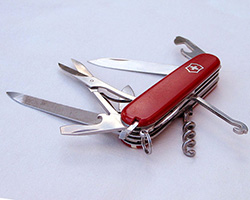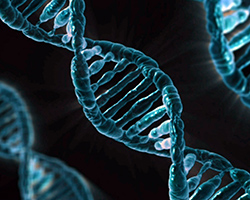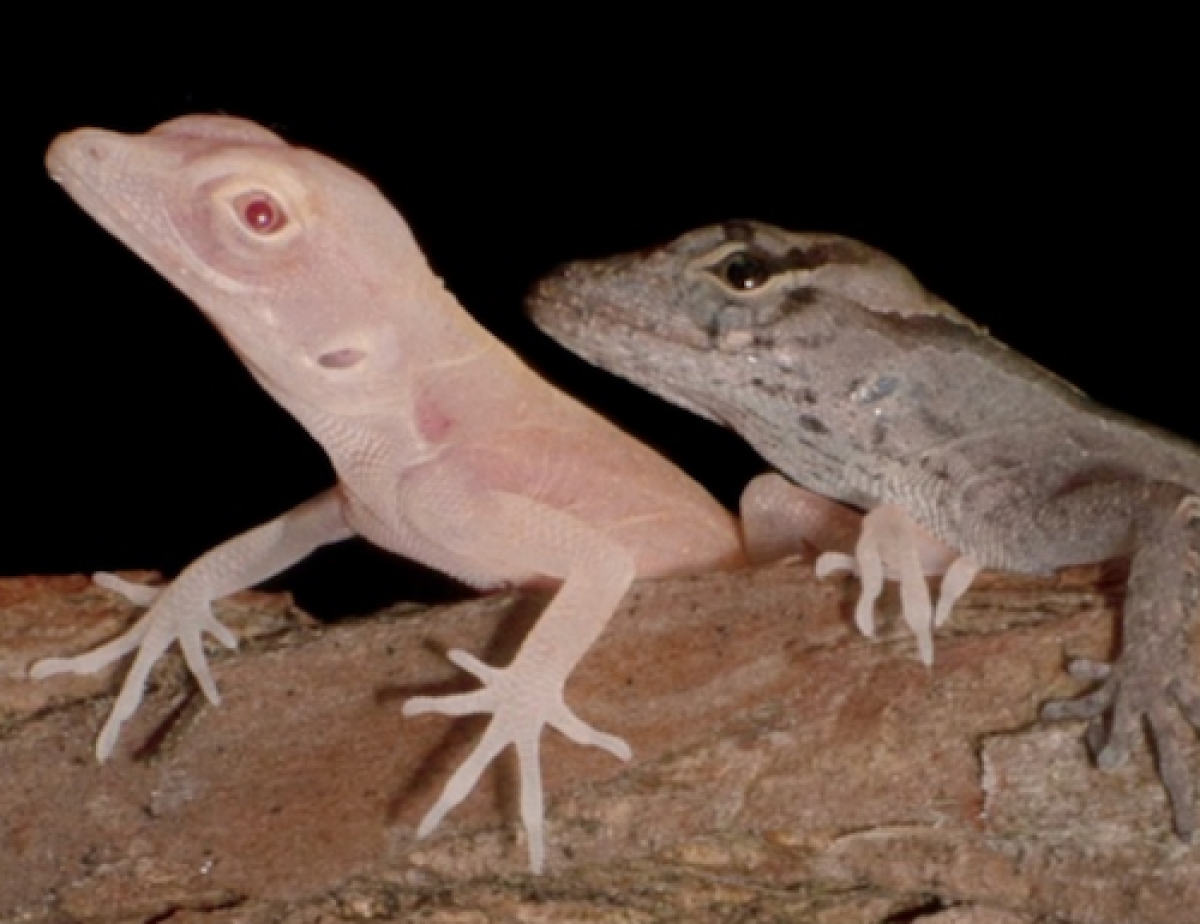CRISPR: One Tool, Many Uses

What’s better than a tool that is good for one job? A tool that is good for lots of different jobs! CRISPR is like a biological Swiss Army knife. It can be used as a tool to do many different kinds of tasks in all kinds of organisms, from bacteria to humans.
Before CRISPR, many scientists still manipulated DNA in their experiments to better understand how living systems work, but they used other tools. Scientists used to use nuclease tools or special chemicals to make changes to DNA. But now, those scientists can do their same experimental research, but with CRISPR. This makes CRISPR useful for many different kinds of research. For example, CRISPR is used in research in genetics, animal behavior, evolution and development, and personalized medicine. CRISPR is especially useful in synthetic biology and bioengineering research.
K.O.! Gene Knockouts

The most common use of CRISPR as a research tool is for performing gene knockouts. Gene knockouts are when scientists make genetic changes to permanently make a gene no longer function. For a gene knockout, scientists can target a specific site in a gene of interest for CRISPR to cut. When that cut is made, the cell’s natural DNA repair processes try to fix the damage to the gene. But sometimes these repair processes make mistakes by inserting or deleting additional nucleotide bases at the cut site. These mistakes often stop the gene from functioning normally. By studying the effects of knocking out a certain gene, scientists can learn more about that gene’s function.
Shhh! Gene Silencing
Scientists also use CRISPR for things besides making changes to DNA. They also use CRISPR for gene silencing. Gene silencing is when the introduction of a molecule blocks the function of a gene. Unlike a gene knockout, gene silencing only temporarily affects gene function.

New tools have also been developed, just for gene silencing. Scientists have made a new class of CRISPR-associated proteins, called dCas proteins. dCas proteins are exactly like other CRISPR proteins except that they do not cut the DNA. Instead of cutting DNA, the dCas proteins only bind to a target location. As long as they are bound to the DNA, the dCas proteins stop gene expression at that location of the genome. Scientists can learn about the function of genes by observing the changes before and after gene silencing from the introduction of dCas proteins.
CRISPR makes gene editing precise, cheap, and easy to do. Because of this, CRISPR has been adopted in science laboratories across the world as a basic research tool.
Albino Anolis lizard image from Ashley Rasys et al "CRISPR-Cas9 Gene Editing in LizardsThrough Microinjection of Unfertilized Oocytes," published under CC-BY-NC 4.0 International licence by bioRxiv.
Read more about: Cutting DNA with CRISPR
Bibliographic details:
- Article: CRISPR in Research
- Author(s): Dr. Biology
- Publisher: Arizona State University School of Life Sciences Ask A Biologist
- Site name: ASU - Ask A Biologist
- Date published: 14 Mar, 2019
- Date accessed:
- Link: https://askabiologist.asu.edu/crispr-research
APA Style
Dr. Biology. (Thu, 03/14/2019 - 13:52). CRISPR in Research. ASU - Ask A Biologist. Retrieved from https://askabiologist.asu.edu/crispr-research
Chicago Manual of Style
Dr. Biology. "CRISPR in Research". ASU - Ask A Biologist. 14 Mar 2019. https://askabiologist.asu.edu/crispr-research
Dr. Biology. "CRISPR in Research". ASU - Ask A Biologist. 14 Mar 2019. ASU - Ask A Biologist, Web. https://askabiologist.asu.edu/crispr-research
MLA 2017 Style

Be Part of
Ask A Biologist
By volunteering, or simply sending us feedback on the site. Scientists, teachers, writers, illustrators, and translators are all important to the program. If you are interested in helping with the website we have a Volunteers page to get the process started.

